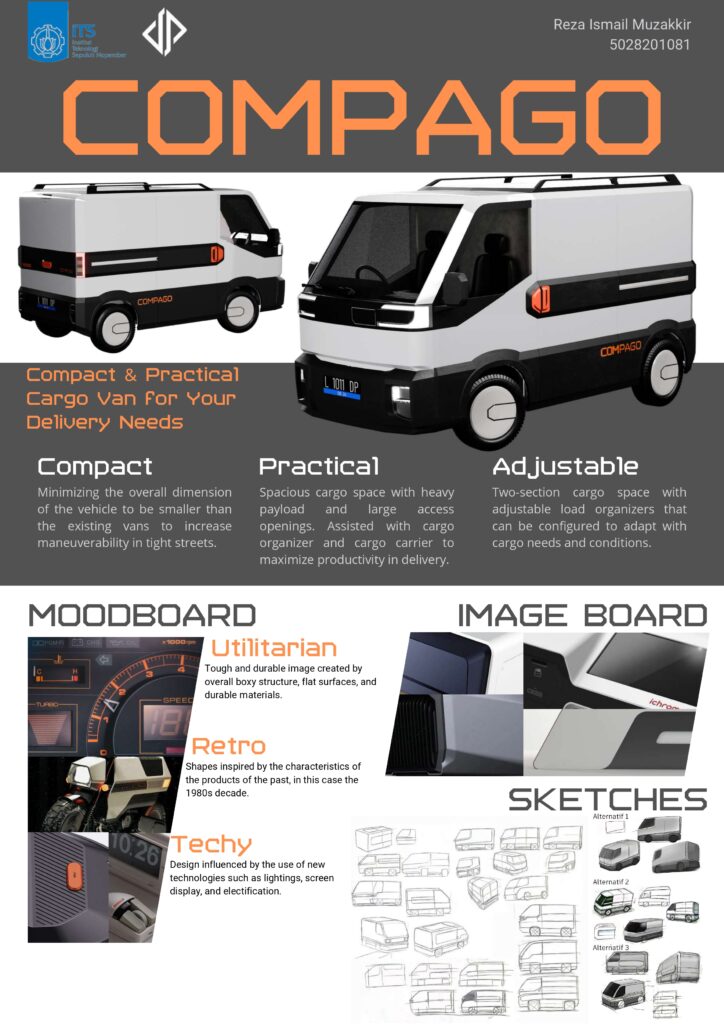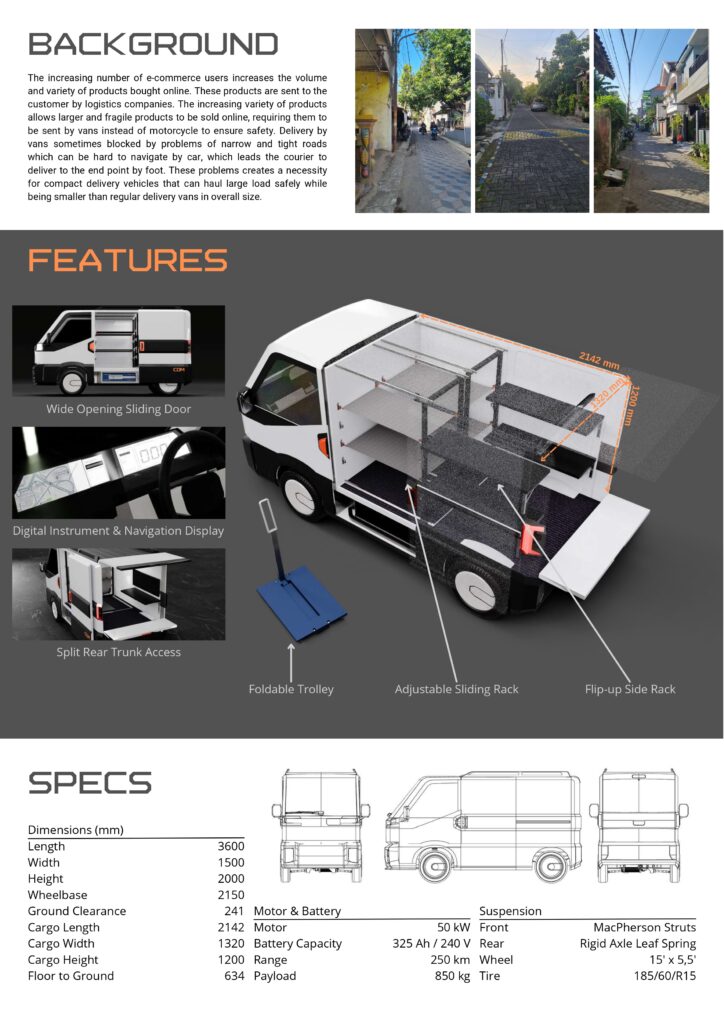The development of e-commerce has had an impact on supporting sectors, one of which is logistics. Logistics has a crucial role in e-commerce activities to connect buyers and sellers. This causes an increase in logistics delivery activities along with increasing online trading activities. The development of the e-commerce sector is expanding the product segments that can be bought and sold on the platform, from small products such as clothing, to large products such as electronics. The vehicles used for logistics delivery currently consist of small vehicles and large vehicles which are used according to the route and load served, while most cities in Indonesia consist of dense residential areas and have road access with different road widths. This can reduce the efficiency of logistics delivery, especially for delivering large packages, so there is a need for vehicles that can carry large, heavy and sensitive logistics packages safely and can still maneuver nimbly and easily in congested environments with narrow road widths. Therefore, it is necessary to design logistics vehicles that have compact dimensions and large capacity to facilitate logistics delivery operations by car in areas with narrow roads. This design uses the Consumer Journey Mapping method to map the activities carried out in logistics activities. Analysis was carried out on the classification and dimensions of logistics packages, organizational methods, and package storage access to obtain design requirements and objectives. From this analysis, dimensions, platforms and specifications are obtained that suit the needs which are then used as a basis for developing alternative visual designs, interiors and vehicle features. From this design, an electric vehicle was produced to fill the commercial vehicle segment between small commercial vehicles and large vehicles to facilitate the delivery of packages that cannot be carried by small vehicles to areas that are difficult for large vehicles to access.


